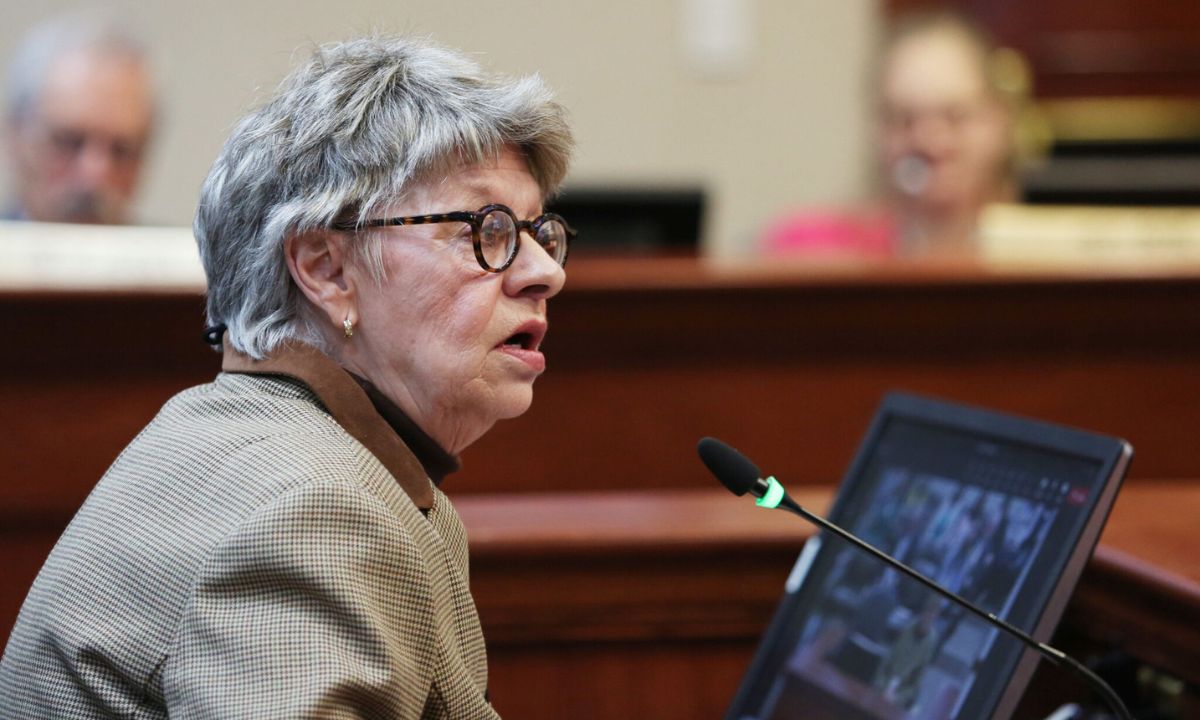Teacher Pay Mandates Pass Committee Without Promise of New Funding
Education lobbyist says bill would put more responsibility on lawmakers in future.

Get stories like these delivered straight to your inbox. Sign up for The 74 Newsletter
A bill requiring public schools to raise teacher pay with no promise of new state funding passed a legislative committee Wednesday in Pierre.
Nobody testified against the legislation, but several lobbyists representing the education community called it a work in progress.
“It is not a perfect bill, but a compromise that will hopefully help us attract new teachers and retain the current, experienced teachers, and bring quality education to the students in the state of South Dakota,” said Dianna Miller, a lobbyist for the Large School Group.
The legislation would set a statewide minimum teacher salary of $45,000, beginning July 1, 2026. That minimum standard would increase each year by a percentage equal to the annual increase in state education funding approved by the Legislature and governor.
The bill would also require schools to raise their average teacher compensation — including pay and benefits — by percentages equal to annual increases in state funding. That requirement would begin with the 2025 fiscal year.
Gov. Kristi Noem, who has criticized school districts for not matching teacher pay increases with state aid increases, is proposing a 4% increase in education funding for the next state budget.
School districts that fail to meet the bill’s requirements could suffer a $500-per-teacher deduction in state education funding. But they could also request a waiver and work with the state School Finance Accountability Board to come into compliance.
Because the bill depends on future legislative decisions to increase state funding, a lobbyist for schools said it will spread the responsibility for teacher salaries beyond local school boards. Schools rely not only on state funding, but also on federal funding and local property tax revenue.
“Let’s make no mistake: This does create some shared responsibility now with the Legislature, because as we move forward, it’s going to be the responsibility of the Legislature to help fund education,” said Mitch Richter, lobbyist for the South Dakota United Schools Association.
Richter said some small, rural schools with stagnant or declining enrollment might be unable to meet the bill’s requirements. State funding for individual schools is tied to enrollment, so schools with declining enrollment may not receive the full benefit of annual increases in state aid. He said some of those rural schools might be forced to consolidate.
“We’ll have to come up with a plan for that, because those districts are going to need some help,” Richter said.
Miller said the bill could also cause difficulties for larger schools with declining enrollment, possibly causing them to use reserve funds to raise teacher pay.
According to the National Education Association, South Dakota ranks 49th in average teacher pay (out of 51, due to the inclusion of Washington, D.C.).
That’s despite the passage of a half-percentage-point increase in the state sales tax rate in 2016 to raise teacher salaries. The legislation sent an infusion of money to schools that pushed South Dakota up a few places in national teacher pay rankings, but the state has slipped in the rankings since then. Last year, legislators and Gov. Noem reduced the state sales tax rate from 4.5% to 4.2%.
Joe Graves, head of the state Department of Education, said this year’s bill is a continuation of the work that started in 2016. He called the bill a “rock solid step forward in ensuring enhanced compensation for our state’s teachers.”
Graves said the bill includes some provisions to help schools meet the requirements. For example, a provision that was amended into the bill Wednesday would allow school boards to roll some of their excess average compensation forward to future years.
“Districts, in other words, can exceed one year’s increase, in order to have already made progress on future increases,” Graves said.
The House Education Committee voted 11-2 to send the bill to the House of Representatives. Rep. Phil Jensen, R-Rapid City, and Rep. Stephanie Sauder, R-Bryant, cast the two no votes.
Jensen referenced Rapid City school officials’ inability to win voter approval of bond financing for construction projects, which has made it difficult for the district to maintain its facilities.
“I’m afraid that this would just be disastrous for the Rapid City schools along with all the smaller schools,” Jensen said.
Sauder said the legislation would cause some schools to eliminate teaching positions and combine classrooms.
“It just doesn’t iron out the wrinkles that need to be taken care of before we move forward,” she said.
EDITOR’S NOTE: This story has been altered since its original publication with language to clarify the effect of 2016 legislation on teacher pay.
South Dakota Searchlight is part of States Newsroom, a network of news bureaus supported by grants and a coalition of donors as a 501c(3) public charity. South Dakota Searchlight maintains editorial independence. Contact Editor Seth Tupper for questions: info@southdakotasearchlight.com. Follow South Dakota Searchlight on Facebook and Twitter.
Get stories like these delivered straight to your inbox. Sign up for The 74 Newsletter

;)